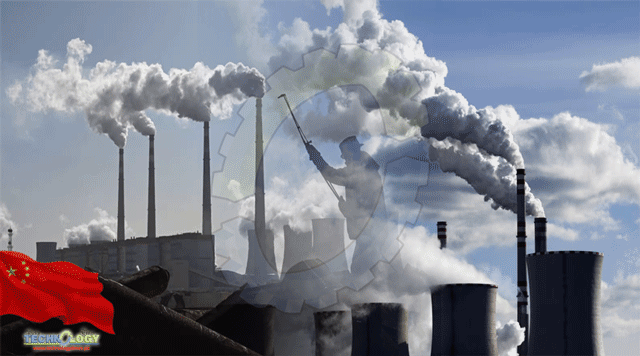China Energy Investment Corporation says it has developed a technology allowing it to add ammonia – which burns cleaner than fossil fuels – to the mix. It’s seen by some experts as an effective way for the country to lower carbon emissions, but others say it is too costly and inefficient

A Chinese state-run energy company says it has developed a technology that allows it to add ammonia to its coal-fired power units to reduce carbon dioxide emissions.
China Energy Investment Corporation on Monday said it had for the first time burned 35 per cent ammonia at a coal-fired power unit, in Shandong province, after the project passed an industry review.
Using ammonia – which burns cleaner than fossil fuels – is seen by some energy experts as an effective way for the nation’s coal-fired power plants to lower their carbon emissions, but others say it is too costly and inefficient.
China is the world’s largest consumer of energy and its biggest greenhouse gas emitter. Coal-fired power generation is currently the biggest source of the country’s carbon dioxide emissions, producing about 35 per cent of the total.
Beijing has pledged to reach peak carbon emissions before 2030 and to achieve carbon neutrality by 2060. But it has a long way to go to decarbonise its power sector: nearly 70 per cent still comes from burning coal.
Given that heavy reliance on coal, some experts argue that “clean coal” technologies are essential to achieving these goals because the country will not be able to make the shift away from coal in a short time.
Ammonia is made from hydrogen, produced from fossil fuels, combined with nitrogen from the air and is a key raw material in fertilisers.
Burning ammonia does not produce carbon dioxide (CO2) but it does result in substantial emissions of nitrous oxide – a greenhouse gas that is more powerful than CO2 but could be captured in the flue gas of a power station.
A technology allowing the use of ammonia in coal-fired power plants is critical for China to reduce emissions, according to Lin Boqiang, dean of the China Institute for Studies in Energy Policy at Xiamen University.
“This belongs to the ‘clean coal’ technologies and it’s very important for China and some developing countries, though it’s not important for the developed ones because they have almost phased out coal,” he said. “The idea is that if we cannot phase it out in a short time, we can reduce the emissions.”
That view was echoed by Yue Guangxi, a professor at Tsinghua University’s energy and power engineering department. He told Chinese state-run Energy magazine on Tuesday that the technology offered an alternative path to decarbonise China’s coal power sector, along with carbon capture and storage.
In November, China said it would set up a special relending facility worth 200 billion yuan (US$31.4 billion) to support the clean use of coal.
Other efforts to reduce emissions in the power sector include the use of “ultra-supercritical” technology, which is less polluting, in coal-fired plants. Such technology was in use at 88 per cent of China’s coal-fired power plants as of 2020.
Japan is also trying to use ammonia as a fuel in its coal power plants. Its biggest power generator, JERA, began adding 20 per cent ammonia to a coal-fired unit at a plant in Aichi prefecture in October. The government will also provide 27.9 billion yen (US$244.3 million) in subsidies for two JERA demonstration projects aiming to burn at least 50 per cent ammonia with coal at its power plants by 2029.
But using ammonia to generate power is controversial because of its low efficiency and high costs.
Earlier this month, London-based Recharge, a trade publication for the renewable energy industry, called it an “incredibly inefficient method to produce electricity”. Recharge estimated that it would take 14.38 megawatt-hours (MWh) of energy to produce 1 tonne of green ammonia – a zero-carbon fuel made from hydrogen that is produced using renewable energy. That would only generate the equivalent of 5.16MWh when burned, which would reduce to 1.96MWh in a coal-fired power plant.
Greenpeace, meanwhile, estimated that adding 20 per cent ammonia to a coal power plant would increase annual fuel costs by 99 per cent, without the added costs of carbon capture and storage, and by 127 per cent a year with CCS.
Paul Martin, a co-founder of the Hydrogen Science Coalition, which aims to inform public investments in hydrogen, called Japan’s ammonia-coal projects “wasteful greenwash”.
“The use of ammonia as a fuel is possible,” Martin wrote in a LinkedIn post. “But for stationary applications like power plants to be used more than occasionally as an emergency backup fuel, it’s highly questionable. Feeding it as a co-feed to inefficient coal plants? That’s just crazy.”
Source: South China Morning Post